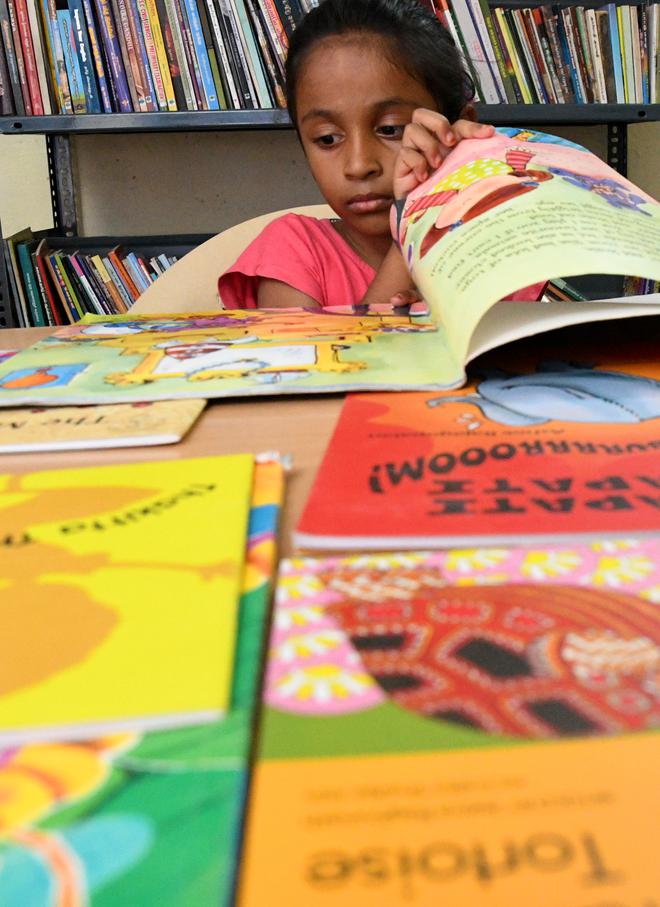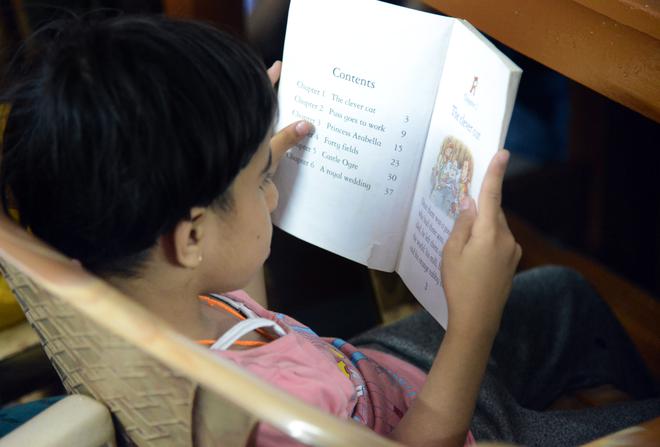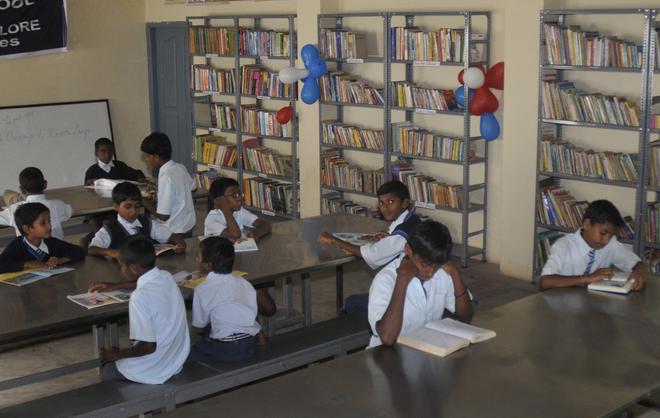In an era dominated by smartphones, tablets, and countless electronic gadgets, there are concerns about children losing out on the enchanting world of books. Words on paper, competing for attention against the glow of digital screens, tend to be less appealing, but the long-term costs of this are flagged by many. However, is there really enough age-appropriate, affordable reading content for children, particularly in regional languages? No, say experts, authors and story tellers from the city.
A workshop being planned in Bengaluru by Parag (an initiative of Tata Trusts under its book development work in Kannada), in partnership with Bahuroopi Publishers, aims to address this issue. Bimba Pratibimba, a seven-week translation workshop for emerging translators in Kannada starting January 26, will allow emerging and aspiring translators in Kannada to delve into aspects of children’s literature and translations. It will enable them to explore a variety of contemporary literature for children in English and Indian languages, experiment with various approaches and practices in translation and engage closely with experts in the field.

Why the workshop
Parag felt the need for such an exercise given the limited contemporary books for children in the language. It was felt that where they are available, there are gaps in the range of age groups addressed, genres and formats. The organisation found that there is a lack of innovative contemporary literature for children and young adults and believes that by bringing in diversity of literature from various other languages, regions and contexts, good-quality translations in Kannada can fill this gap to a certain extent and pave the way for a print-rich environment, with greater access, experimentation, and engagement.

Sreeja V.N., the founder of Bahuroopi, says, “The main objective of the workshop is to build and strengthen a community of translators in Kannada children’s literature, that can contribute to the availability of contemporary writing for children in the language. In the workshop we will introduce participants to contemporary literature, genres, formats and themes and theories and practices of translating for children and young adults.”
The workshop is limited to 15 participants who are emerging translators. Through an extended mentorship period, the workshop will help develop good-quality, publishable translated manuscripts. “We are hoping that through this workshop we will be able to publish at least 5-6 well translated books for children,” Sreeja says.
Production and sales challenges
Speaking about the children’s literature scene, especially in Kannada, Sreeja says that publishers need to find a balance between production and sales for literature to reach children. “There is lack of contemporary content for children. Many of the books that are available for children now are rehashed books, they are rewritten stories of Panchatantra and similar stories. To produce quality literature for children, it is important to promote original writing. The cost of printing books for children is also very high as it includes a lot of colour and illustrations, which automatically means the books will be sold at a higher price too, and parents refuse to buy such books for their children. So, until we find a balance between production and sales, it will be hard to promote literature for children,” she says.
Another important aspect that has led to lack of easily available literature for children is the policy decision of many libraries. Most libraries do not take in books that are staple bound, and choose to only have perfectly bound books, while most of the books written for children are staple bound. “Unless and until an organisation, or a school or a local library procures these books, many children have no free access to literature,” adds Sreeja.
In such a scenario, how does one reinvent to enthuse children to read more and make books more accessible to children?

Modes of story telling
Author, translator, scriptwriter and Kannada language trainer Abdul Rehman Pasha says that different methods of storytelling will help promote reading habits among children. “There is nobody who is not interested in listening to stories. A story has something that is not within one’s experience and gives the child an entirely different world. Children might not be interested in reading at an early age, but different methods of storytelling can inculcate the habit and a child could grow up and read books. When people my age were young and could not read, we heard stories mostly from our parents, grandparents, and teachers, and that is what made us want more stories. The urge to hear more stories leads us to grab a book, which satisfies our need to constantly read a story.”
Performance storyteller and theatre practitioner Vikram Sridhar believes that one way of introducing books to children can be activities are key to making literature more accessible. Different performance and oral mediums like storytelling, theatre, songs, and other forms are a great way to introduce a child to a book, because a child never gets to a book directly, the child only gets to a book knowing there is something there for them, he says, echoing the sentiments of Abdul.
Abdul points out that in Kannada we have always had writers and poets like Kuvempu and Bendre writing a lot of literature for children that spoke about language, culture, and anything within our experience. However, for children who read only in Kannada, we need more content that is suitable for the present-day child. “English literature has a lot of content that sensitively caters to the needs of children, that can be translated to Kannada and other regional languages for children,“ he feels.
Mahesh Balasubramaniam, one of the founders of Paperback bookstore that stocks books for children in English and Kannada, has observed that parents and children prefer buying fiction and English books over non-fiction and regional language books, “Book series like Harry Potter, Tom Gates, Treehouse, and Percy Jackson and story books by authors like Satyajit Ray, Ruskin Bond and Sudha Murthy sell well with young adults.” However, by and large, in comparison to English books, books in regional languages like Kannada do not do well, he says. “Even if parents want to buy Kannada literature for children it is very difficult to find Kannada literature for children,” Mahesh added.
Ramesh Udupa, executive director of Navakarnataka Publications, that has published more that 800 fiction and non-fiction books for children, highlights the same issue. “In comparison with English literature, in Kannada we lack variety for children. Most of the Kannada literature is focused on the same mythological and folk stories. Though there are contemporary and original story books or non-fictional books slowly coming in Kannada, parents prefer buying books in English for their child. Just as important English is for a living, it is also important that parents introduce their children to regional literature.”
How to introduce books
Lakshmi Karunakaran, an educator, communication professional, and the Program Lead of Parag, says exposure to diverse forms of literature helps build more holistic individuals. “Books allow a child to see himself/herself in a character or story, which helps build a certain acknowledgment of their existence; what they might have experienced, which in some way validates their being. Whether it is reality or fantasy, books help a child understand, imagine and learn about other cultures, other people, other places, and a whole different world,“ she says.
Underlining the importance of local content across languages, she says that it is important to create children’s books where the child encounters their own mother tongue, culture, context, and feels acknowledged and validated. “The content we have for children is definitely different and better than what we had 20-25 years ago. However, there is a lack of original writing and new writers, especially in Kannada and Hindi literature. We need to create more literature in Indian languages and genres,“ Lakshmi says, talking about the status of literature for children in Karnataka currently.







